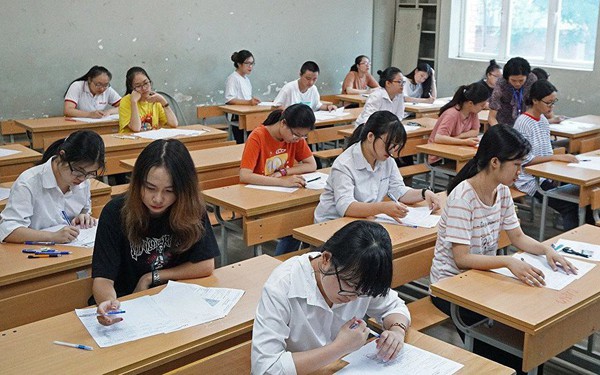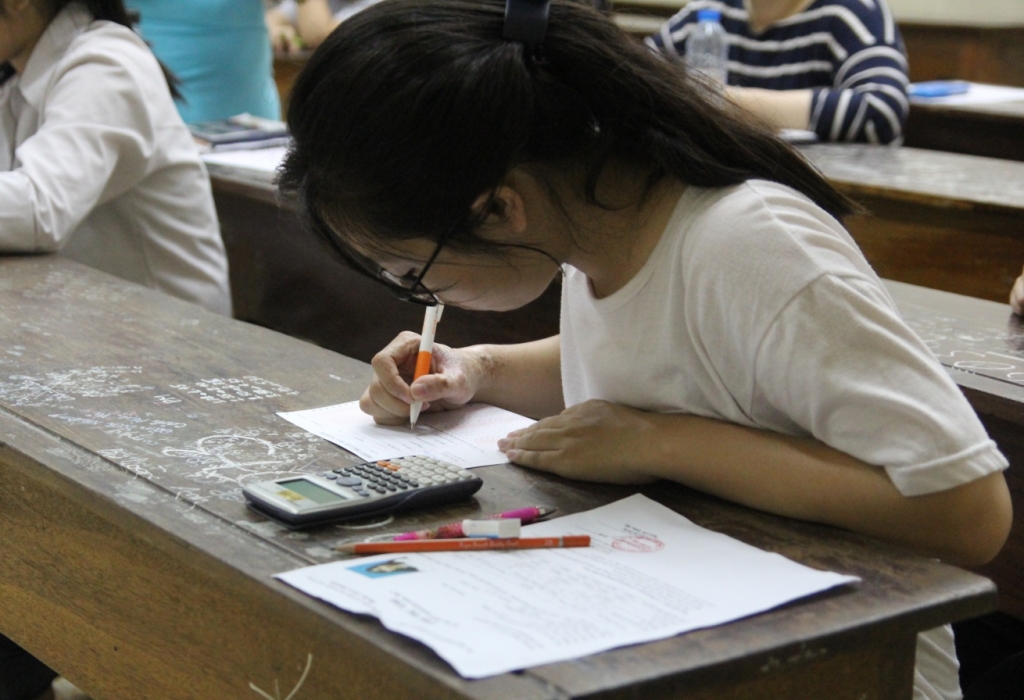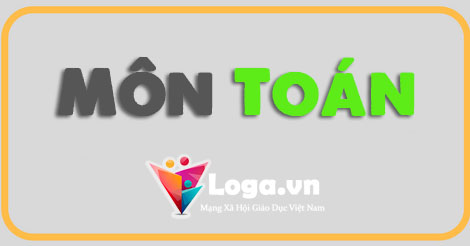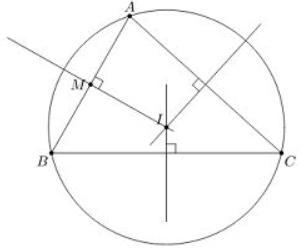Đề thi thử THPT Quốc Gia lần 1 năm 2019 môn Tiếng Anh trường THPT Lý Thái Tổ
Choose A, B, C, or D that best completes each unfinished sentence, substitutes the underlined part
Question 1: Many graffiti ______ without the permission of the owner of the wall.
- are writing B. are written C. is writing D. is written
Question 2: You should be very ___________to your teachers for their help
A. considerate B. thankful C. gracious D. grateful
Question 3: You can your shorthand ability by taking notes in shorthand during lectures.
A. keep up B. keep back C. keep in D. keep on
Question 4: Scientists now understand ______________
A. how birds navigate over long distances
B. how to navigate over long distances the birds.
C. how to distance the birds from navigating
D. how long distances navigate the birds
Question 5: "Which hat do you like best?" - "________________ ”
A. Yes, I like it best B. The one I tried on first
C. Which one do you like? D. No, I haven't tried any
Mark the letter A, B, C, or D on your answer sheet to indicate the underlined part that needs correction in each of the following questions.
Question 6: The federal government recommends that all expectant women will not only refrain from smoking but also avoid places where other people smoke.
A. expectant B. will not only refrain C. recommends that D. smoke
Question 7: It took the mayor over an hour explanation to the other members of the board why he had missed the last meeting
A. he had missed B. explanation C. over an D. of
Question 8: I’m so glad that he spoke in my behalf because I felt awful that I couldn’t make it to the event.
A. felt awful B. in my behalf C. make it D. the event
Mark the letter A, B, C, or D on your answer sheet to indicate the word that differs from the other three in the position of primary stress in each of the following questions.
Question 9: A. solution B. energy C. quality D. compliment
Question 10: A. secure B. angry C. polite D. complete
Mark the letter A, B, C, or D on your answer sheet to indicate the word whose
underlined part differs from the other three in pronunciation in each of the following questions.
Question 11: A. floor B. door C. noodle D. board
Question 12: A. visits B. destroys C.believes D. depends
Mark the letter A, B, C, or D on your answer sheet to indicate the sentence that is closest in meaning to each of the following questions.
Question 13: They believe that burning fossil fuels is the main cause of air pollution.
A. It is believed that air pollution is mainly to blame for burning fossil fuels.
B. It is believed that burning fossil fuels is held responsible for air pollution.
C. Burning fossil fuels is believed to result from air pollution.
D. Burning fossil fuels is believed to have caused high levels of air pollution.
Question 14: “I haven’t been very open-minded,” said the manager.
A. The manager admitted not having been very open-minded.
B. The manager denied having been very open-minded.
C. The manager promised to be very open-minded.
D. The manager refused to have been very open-minded.
Question 15: Peter used to work as a journalist for a local newspaper.
A. Peter has stopped working as a journalist for a local newspaper.
B. Peter no longer likes the job as a journalist for a local newspaper.
C. Peter refused to work as a journalist for a local newspaper.
D. Peter enjoyed working as a journalist for a local newspaper.
Mark the letter A, B, C, or D to indicate the word or phrase that is CLOSEST in meaning to the underlined part in each of the following questions.
Question 16: My mom is always bad-tempered when I leave my room untidy.
A. Feeling embarrassed B. talking too much
C. very happy and satisfied D. easily annoyed or irritated
Question 17: I could see the finish line and thought I was home and dry.
A. successful B. hopeful C. hopeless D. unsuccessful
Mark the letter A, B, C, or D on your answer sheet to indicate the word or phrase that is OPPOSITE in meaning to the bolded part in each of the following questions.
Question 18: He didn’t bat an eyelid when he realized he failed the exam again.
A. wasn’t happy B. didn’t want to see
C. didn’t care D. didn’t show surprise
Question 19: The US troops are using much more sophisticated weapons in far East.
A. expensive B. complicated
C. simple and easy to use D. difficult to operate
Read the following passage and mark the letter A, B, C or D to indicate the correct word or phrase that best fits each of the numbered blanks from 20 to 24
Many animals in the wild are suspicious and fearful of human beings. Many animals would take escape instantly (20)_____________a human approaches. Man, however, soon discovered that some animals can be tamed or domesticated. Unlike animals in the wild, these animals would (21) _____________ man to come close to them. They would even allow their owners to stroke or pet them. In the early times man would domesticate animals by setting traps to catch their young. A young animal is (22) _____________ easily domesticated than an adult one. From young, the animal learns to trust and obey its owner. Many different kinds of animals have been domesticated. Some common examples are animals like horses, elephants, chickens and pigs. The dog, which is also (23)_____________ as "man's best friend", is one of the first animals to have been domesticated. In England, long ago, the pig was a wild animal. It was a ferocious and aggressive (24)_____________ which was not easily captured. Yet nowadays, the domesticated pig is no longer the lean and tough than creature it used to be.
Question 20: A. when B. whether C. where D. while
Question 21: A. allow B. make C. tolerate D. Let
Question 22: A. quite so B. lots more C. far more D. so much
Question 23: A. identified B. known C. considered D. recognized
Question 24: A. species B. individual C. A & B D. creature
Choose A, B, C, or D that best completes each unfinished sentence, substitutes the underlined part
Question 25:_______ he followed my advice, he ____________ be unemployed now.
A. Unless/ can’t B. Should/ will
C. Were/ would not D. Had/ would not
Question 26:____ little boy could remember what he had read from __________ book.
A. A/ the B. the/ a C. the / the D. X/ the
Question 27: The judge said that he was _ by the high standards of performance by the riders.
A. excited B. impressed C. interested D. imposed
Question 28: Be careful how you ____ that jug; It will break very easily.
A. pour B. operate C. handle D. employ
Question 29: After driving for five hours, the driver pulled into _ for a rest.
A. a round about B. a bypass C. a lay-by D. a flyover
Question 30: The woman________ when the police told her that her son had died.
A. broke away B. broke down C. broke into D. broke in
Question 31: Mary : " Thanks a lot for your help". - John: "_______________ ".
A. my happiness B. my excitement
C. my delight D. My pleasure
Question 32: My friend always dreams of having____________
A. a small red sleeping bag. B. red sleeping small a bag.
C. small a bag red sleeping. D. a bad small red sleeping.
Question 33: David graddol, a British linguist, believes that English______________ 80% of computer- based communication in the 1990s.
- made over B. took up C. answered for D. accounted for.
Read the following passage and mark the letter A, B, C or D on your answer sheet to indicate the correct answer to each of the questions from 34 to 41
Overpopulation, the situation of having large numbers of people with too few resources and too little space, is closely associated with poverty. It can result from high population density, or from low amounts of resources, or from both. Excessively high population densities put stress on available resources. Only a certain number of people can be supported on a given area of land, and that number depends on how much food and other resources the land can provide. In countries where people live primarily by means of simple farming, gardening,
herding, hunting, and gathering, even large areas of land can support only small numbers of people because these labor - intensive subsistence activities produce only small amounts of food In developed countries such as the United States, Japan and the countries of Western Europe, overpopulation generally is not considered a major cause of poverty. These countries produce large quantities of food through mechanized farming, which depends on commercial fertilizers, large - scale irrigation, and agricultural machinery. This form of production provides enough food to support the high densities of people in metropolitan areas. A country's level of poverty can depend greatly on its mix of population density and
agricultural productivity. Bangladesh, for example, has one of the world's highest population densities, with 1,147 persons per sq km. A large majority of the people of Bangladesh engage in low - productivity manual farming, which contributes to the country's extremely high level of poverty. Some of the smaller countries in Western Europe, such as the Netherlands and Belgium, have high population densities as well. These countries practice mechanized farming and are involved in high - tech industries, therefore, they have high standards of living.
At the other end of the spectrum, many countries in sub - Saharan Africa have population densities of less than 30 persons per sq km. Many people in these countries practice manual subsistence farming, these countries also have infertile land, and lack the economic resources and technology to boost productivity. As a consequence, these nations are very poor. The United States has both relatively low population density and high agricultural productivity; it is one of the world's wealthiest nations. High birth rates contribute to overpopulation in many developing countries. Children are asset to many poor families because they provide labor, usually for farming. Cultural norms in traditionally rural societies commonly sanction the value of large families. Also, the governments of developing countries often provide little or no support, financial or political,
for farming planning; even people who wish to keep their families small have difficulty doing so. For all those reasons, developing countries tend to have high rates of population growth.
Question 34: Which of the following is given a definition in paragraph 1?
A. Poverty B. Overpopulation
C. Population density D. Simple farming.
Question 35: What will suffer when there are excessively high population densities?
A. Available resources B. Skilled labor
C. Land area D. Farming methods
Question 36: The phrase “that number” in paragraph 1 refers to the number of________.
A. resources B. countries C. densities D. people
Question 37: In certain countries, large areas of land can only yield small amounts of food because
A. there are small numbers of laborers B. there is lack of mechanization
C. there is no shortage of skilled labor D. there is an abundance of resources
Question 38: Bangladesh is a country where the level of poverty depends greatly on ________.
A. its population density only
B. its high agricultural productivity
C. both population density and agricultural productivity
D. population density in metropolitan areas
Question 39: Which of the following is TRUE, according to the passage?
A. In sub-Saharan African countries, productivity is boosted by technology.
B. All small countries in Western Europe have high population densities.
C. There is no connection between a country’s culture and overpopulation.
D. In certain developed countries, mechanized farming is applied.
Question 40: Which of the following is a contributor to overpopulation in many developing countries?
A. Economic resources B. High birth rates
C. Sufficient financial support D. High-tech facilities
Question 41: Which of the following could be the best title for the passage?
A. High Birth Rate and its Consequences
B. Poverty in Developing Countries
C. Overpopulation: A Cause of Poverty
D. Overpopulation: A Worldwide Problem
Read the following passage and mark the letter A, B, C, or D on your answer sheet to indicate the correct answer to each of the questions from 42 to 48
Today, there are 600 million cars in the world. They may seem like a lot. However, there are over 7 million people on our planet. Most of the world’s population uses public transportation to get around. The number of people using public transportation continues to rise. Subway systems worldwide carry 155 million passengers each day. That’s more than 30 times the number carried by all the world’s airplanes. Every day in Tokyo passengers take more than 40 million rides on public transportation.
Yet many people see public transportation as ‘a depressing experience’, says author Taras Gresco. They say it is slow, crowded, or too expensive. In fact, Gresco says, it is actually ‘faster, more comfortable and cheaper’ than driving a car.Like millions of people, Taras Gresco is a ‘straphanger’ - a person who rides public transportation. In his book straphanger: Saving Our Cities and Ourselves from the Automobile, Gresco describe the benefits of public transportation. Firstly, it is better for the environment. When people use public transportation, they use less fuel. Twenty people on one bus use much less fuel than 20
people in 20 cars. Fewer cars mean less pollution and cleaner air. Using public transportation can be good for your health in other ways. It can even help you
lose weight. In one study, a group of people took public transportation every day for six months. Each day they walked to a bus stop or train station. In six months, each person lost an average of six pounds - almost three kilograms. Taking public transportation has another benefit, says Gresco. It helps people become part of their community. When you are alone in your car, you don’t talk to anyone. One Tokyo straphanger told Gresco, “To use public transport is to know how to cooperate with other people,’ It teaches you ‘how to behave in a public space’. So, public transportation is more than a way to get to work or school. It can
help lead to cleaner cities. It may also lead to a healthier and more cooperative world population.
Question 42: According to the passage, the number of people travelling by planes each day
is about............
A. 185 million B. 125 million C. 5 million D. 20 million
Question 43: The word ‘it” in the passage refers to ................
A. driving a car B. public transportation
C. author Taras Gresco. D. depressing experiece
Question 44: What is not true about Taras Gresco according to the reading passage?
A. Taras Gresco finds public transportation beneficial for both the cities and the users.
B. Taras Gresco often travels by public transportation, especially the bus.
C. Taras Gresco wrote a book about the benefits of public transportation.
D. Taras Gresco launched a campaing to encourage people to use the public
transportation.
Question 45: Which of the following is mentioned as a benefit for a public transportation rider?
A. He or she will be able to learn how to ride a means of public transportation.
B. He or she will have a good chance to enjoy the natural landscape.
C. He or she will have a good chance to make more friends with the different people.
D. He or she will know how to behave in public places and cooperate with others.
Question 46: Which of the following is not mentioned in the passage as the one that benefits from the public transportation?
A. the bus rider B. the environment C. the car driver D. the city
Question 47: How does the environment benefit from people’s use of the public
transportation ?
A. Subways use renewable energy sources instead of the fossil fuels, making the
environment cleaner.
B. The smaller number of cars sold helps the automobile industry save the environment
substantially.
C. Buses and trains not only conserve energy but also save public transportation
D. Fewer people using private transportation means less fuel used, hence cleaner
environment.
Question 48: Which of the following can be the best title of the reading passage?
A. Public Transportation _ We all Benefit
B. Public transportation - to Save the Environment
C. Public Transportation - a way to Loose Weight.
D. public transportation - Cleaner - Cities
Mark the letter A, B, C or D to indicate the sentences that best combines each pair or sentences in the following questions.
Question 49: They finish one project. They started working on the next.
A. Only if they had finished one project did they start working on the next.
B. Had they finished one project, they would have started working on the next.
C. Hardly had they finished one project when they started working on the next.
D. Not until did they start working on the next project then they finished one.
Question 50: The proposal seemed like a good idea. The manager refused it.
A. The proposal didn’t seem like a good idea, so the manager didn’t accept it.
B. The manager didn’t like the proposal because it didn’t seem a good idea.
C. The manager refused the proposal though it seemed like a good idea.
D. Since the proposal seemed like a good idea, the manager refused it.
----------------THE END----------------
ĐÁP ÁN
1-B 2-D 3-A 4-A 5-B 6-A 7-B 8-B 9-A 10-B
11-C 12-A 13-B 14-A 15-A 16-D 17-A 18-D 19-C 20-D
21-B 22-D 23-A 24-A 25-B 26-C 27-A 28-A 29-B 30-B
31-D 32-A 33-D 34-B 35-A 36-D 37-B 38C- 39-D 40-B
41-C 42-C 43-B 44-D 45-D 46-C 47-D 48-A 49-C 50-C







